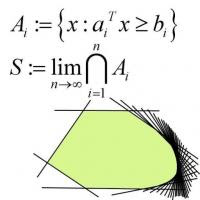We are in the process of a massive transition. We are moving to a 3G SAF, with this and that and this capability. Of late, we have seen the addition of new equipment to our arsenal which promises that we will be able to deliver more hurt with greater precision and with a lower prospect of getting hurt ourselves.
Old equipment is being phased out, nearing the ends of their system life cycles. As we progressively undergo greater and more rapid change, the issue of training and knowledge retention arises starkly. This is particularly true if the pace of technology dictates that system life cycles have to be re-examined (in particular, shortened).
The NS Man, may have to learn to operate a number of different weapons systems as his old expertise becomes obsolete in the face of rapid technological change. Instruction is a problem, do we have the manpower with the expertise to conduct instruction. I propose a modification of our force structure to accommodate this need.
Consider forming some battalions consisting an evergreen crop of NSFs and rotating NS Men, lasting the lifetime of the NSFs liability. In those battalions, NSFs aid in the training of their NS Man colleagues in newer weapon systems where needed. Teaching another is perhaps one of the most effective means of reinforcing and understanding what one has learnt. The training workload will be effectively shared. Furthermore, we accrue a further benefit. Younger NSFs will become more connected to the pulse of the country through interactions with NS Men who have been working and have seen more of life in Singapore. They will benefit from the experience that their older colleagues share. This mixing of young and old may have other social benefits such as bringing younger Singaporeans closer to opportunities such as jobs, and opening them up to possibilities that otherwise may only be observed with the benefit of personal experience.
In addition to this, hardcore expertise is needed to effectively harness the potential of equipment. We have often heard the phrase, "it's not how big or long it is, it is how you use it". Similarly, long range weaponry is only as good as the operator (and can only be as good as its specs, but we'll buy or develop something better if we're in danger of saturation). Centres of excellence/knowledge which give back to the entire organization are important to have for systems that are widely used. I believe in the need for regular battalions to act as centres of knowledge from which master trainers and leaders can arise. These individuals are to be the catalysts for competency development within non-regular units. There already is a movement towards this, but it's value bears reiteration.
Naturally, if this is to work, processes have to be worked out and studied in order to strike a balance between component and integrated training. I successfully pulling this off will be a boost to our overall competency, improve our force multiplier and hence contribute to greater security.
-
Update & Clarification (8 May 2009):
I've been told that currently, NS Men are sometimes deployed to work alongside regulars to understand the mind of the regular and doctrinal issues. I envisioned more of some units with NSFs being present for their liability with NS Men entering and leaving (with ICTs remaining short). At times, there would be training, at others, exercises proper. Training in exercising leadership and initiative is something experienced NS Men have to offer, NSFs in turn are in touch with state of the art technology.
Perhaps the greatest benefit I see is not so much operational as social. A connected mindset, where young NSFs are able to "grow up" faster through contact with people who have been in the world. Operationally, this social benefit will create a more engaged NSF population so they see the intended social function of NS. It doesn't matter that most will not see NS as a machine for defending the nation so much as a vehicle for transforming boys to men and an immersion into real society (by meeting people). The fact of the matter is an engaged soldier is a more effective soldier. This is what has been termed a "head fake". Making someone think he is doing something useful to him, while the real intention is for him to pick up skills. This is the idea behind some software for storyboarding (ALICE) where users (kids) think they are making a movie, but are actually learning principles of computer science.
Operationally, the effectiveness of the army is no longer how many can be fielded, as is reflected in the intent of MM Lee when he advocated a conscript system. (Being able to field a huge number of troops after a few years of running the NS system.) Also, technical obsolescence is no longer something the systems architect and master planner can really control. Speculatively, a new coating could render obsolete every radar (advanced or otherwise) in the world, while being developed in secret and deployed throughout an airforce within a matter of a day (or a few days). The cliche that "the rules have changed" is continually in effect at each break through of the arms race that sits in the background of business and commerce.
From this perspective, having a parallel system whereby all NS Men can be brought up to speed rapidly to the state of the art (perhaps at the expense of some aspect of the training of some NSFs) has value.
Subscribe to:
Post Comments (Atom)




No comments:
Post a Comment